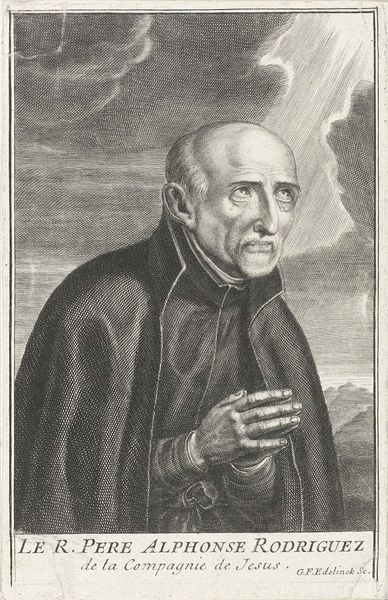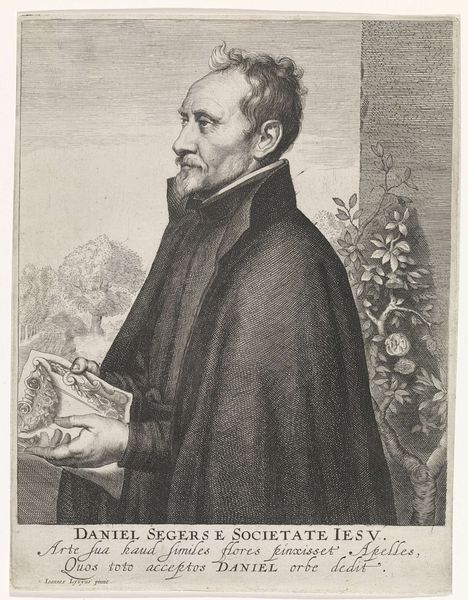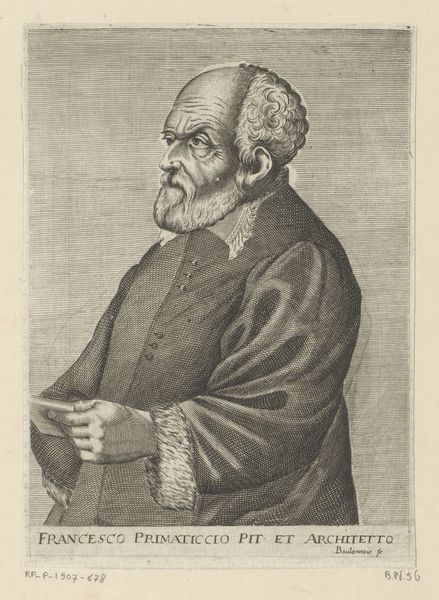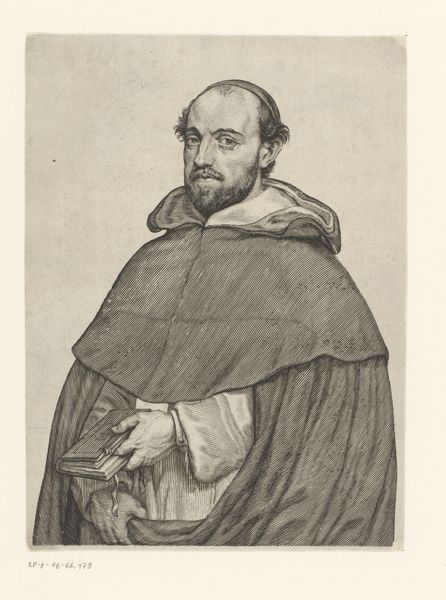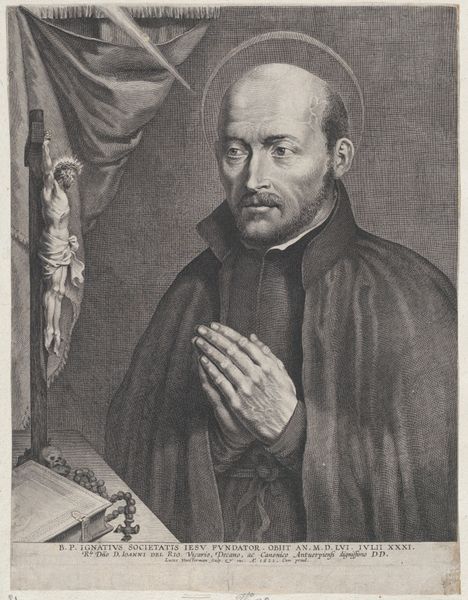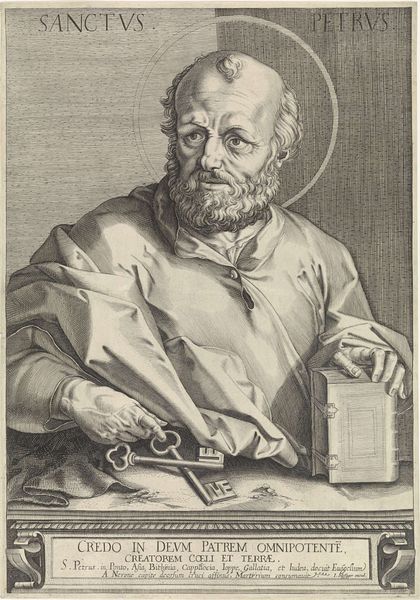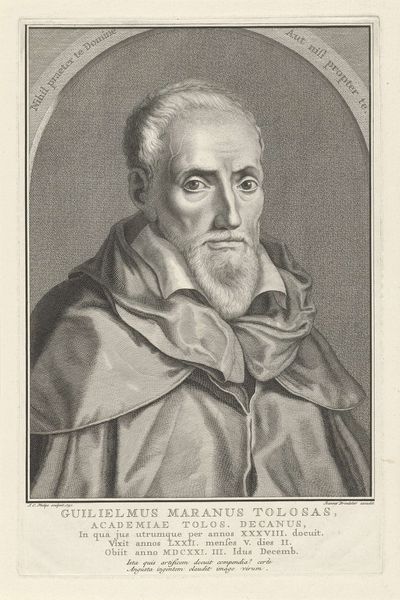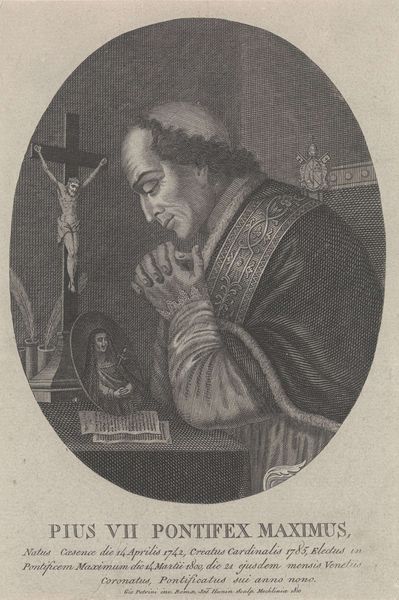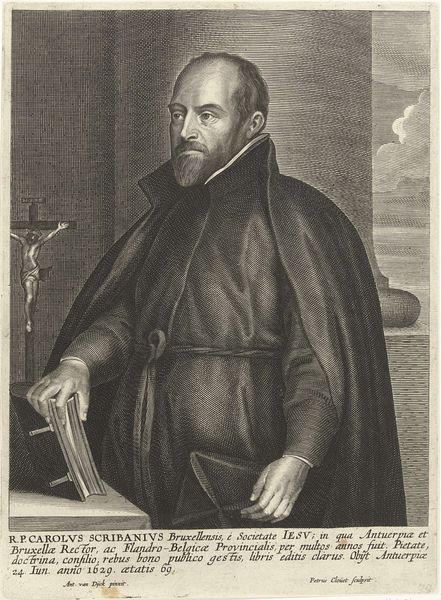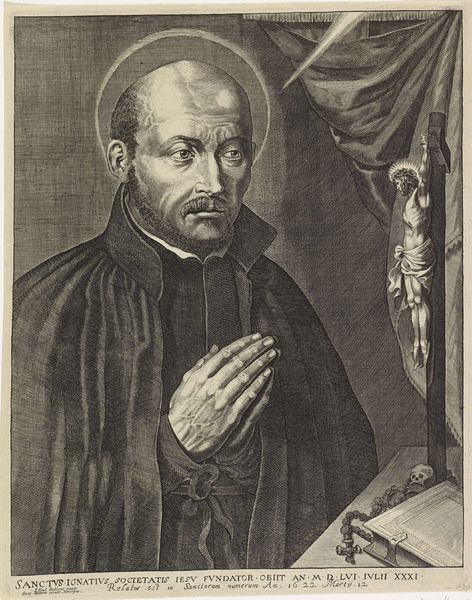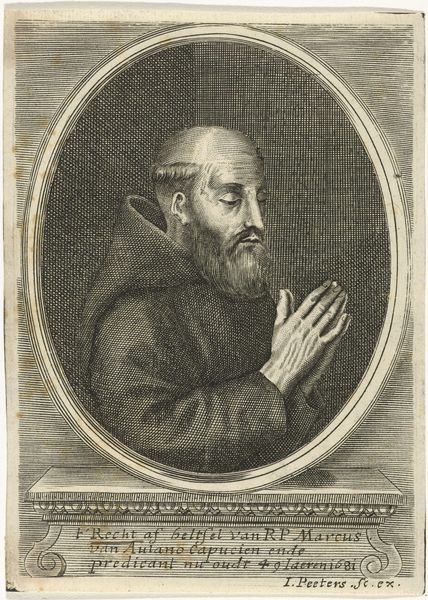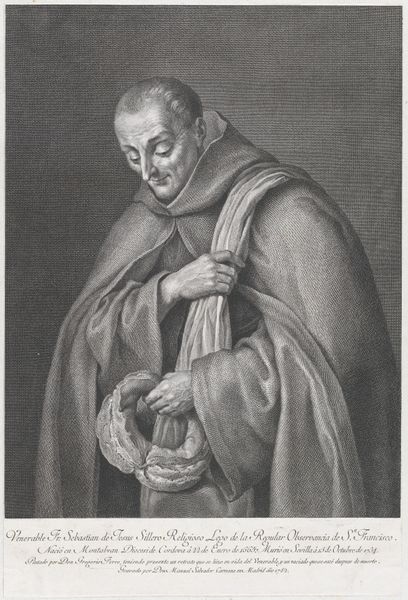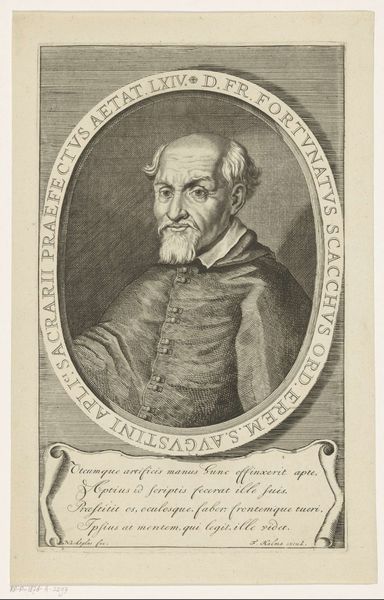
engraving
#
portrait
#
baroque
#
charcoal drawing
#
engraving
Dimensions: height 350 mm, width 249 mm
Copyright: Rijks Museum: Open Domain
Editor: Here we have a rather captivating engraving, “Portret van Antonie Vigier” by Conrad Lauwers, created sometime between 1642 and 1671. The subject’s age really comes across, and the image feels deeply connected to his faith. What strikes you about this portrait? Curator: What immediately grabs my attention is the overt display of religious iconography right alongside the portrait of Vigier. Lauwers situates this individual not simply as a person, but within a very specific framework of power and influence – that of the Church and its teachings. Note the careful placement of the crucifix – not just for piety, but also to reinforce a specific ideological positioning. Does that change how we view the work? Editor: Absolutely, the crucifix feels less about personal faith now and more about institutional power, as you mentioned. What about the inclusion of the written text within the engraving itself? It seems to actively narrate and dictate our perception. Curator: Precisely! That inscription essentially *tells* the viewer how to understand Vigier - as pious, a founder, an heir to an apostolic spirit. This portrait becomes an act of carefully constructed hagiography, reinforcing the church’s narrative about its leaders and their legacy, ensuring he's remembered in a favorable light. The choice of engraving as a medium is key, it ensured this message reached a broad audience. Does this feel propagandistic at all? Editor: I see what you mean. It definitely moves beyond just being a portrait. I now see how Lauwers' work functions to establish Vigier's reputation, reinforcing a specific historical narrative about the church. It's like early PR. Curator: Yes! That tension between artistic representation and institutional messaging becomes incredibly important. Now, when we consider other portraits of the era, we can view them with a more discerning eye towards the social and political functions they performed. Editor: I will never look at religious portraits the same way!
Comments
No comments
Be the first to comment and join the conversation on the ultimate creative platform.
